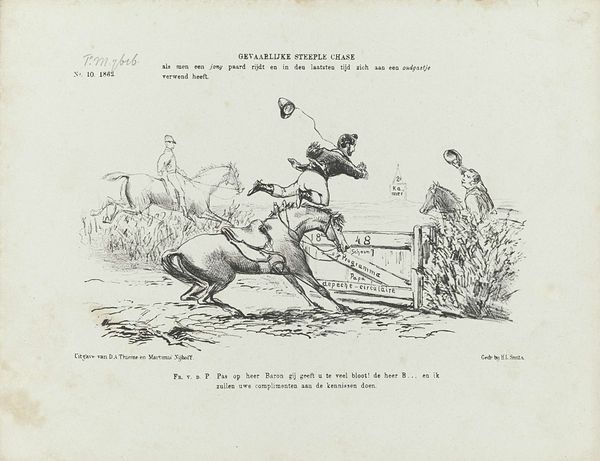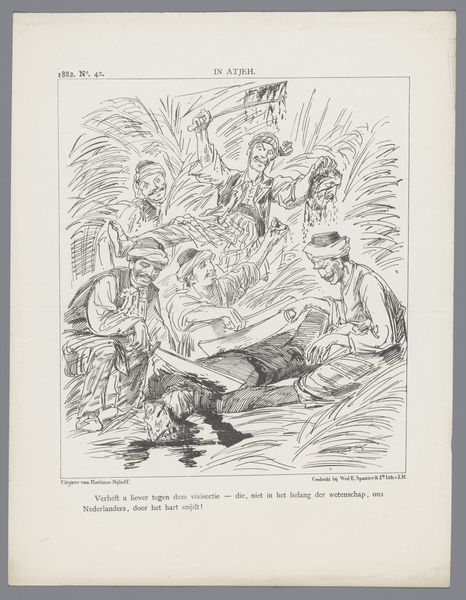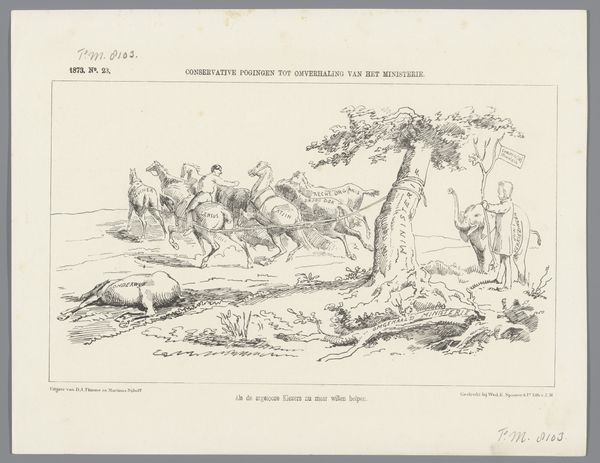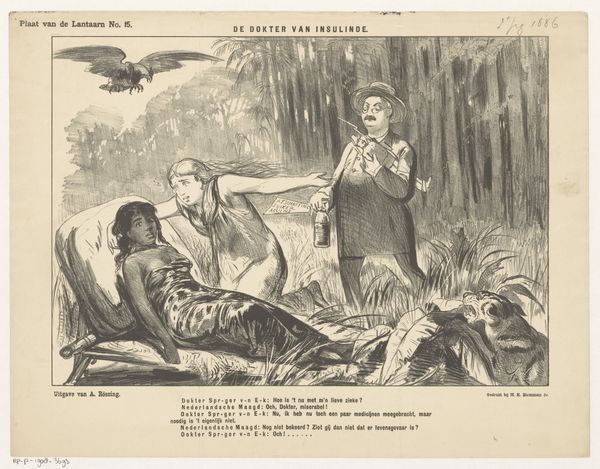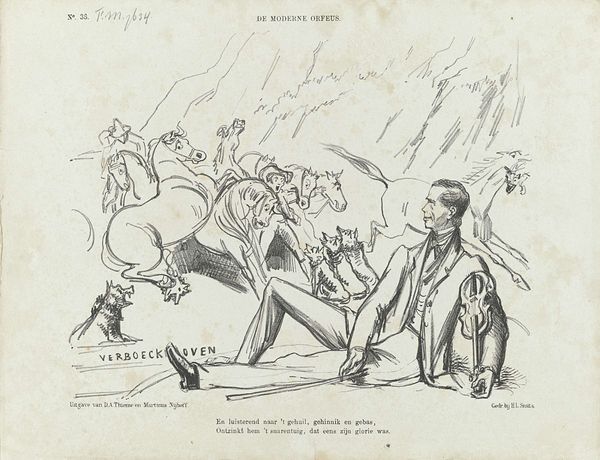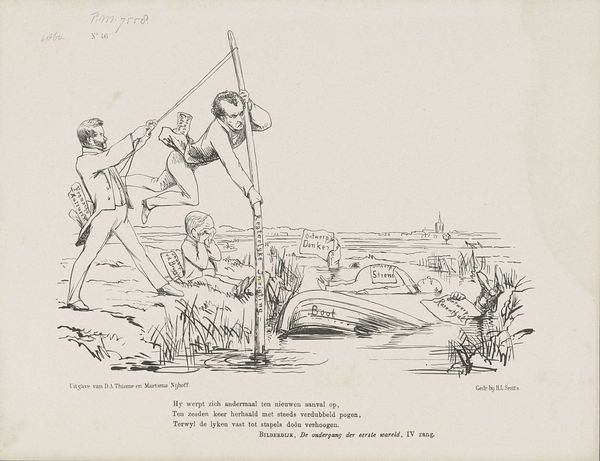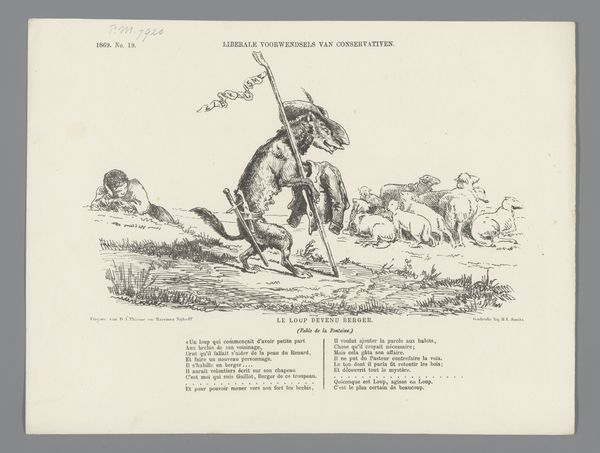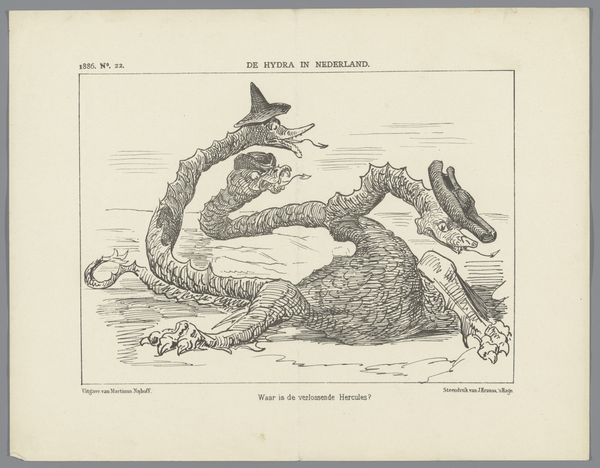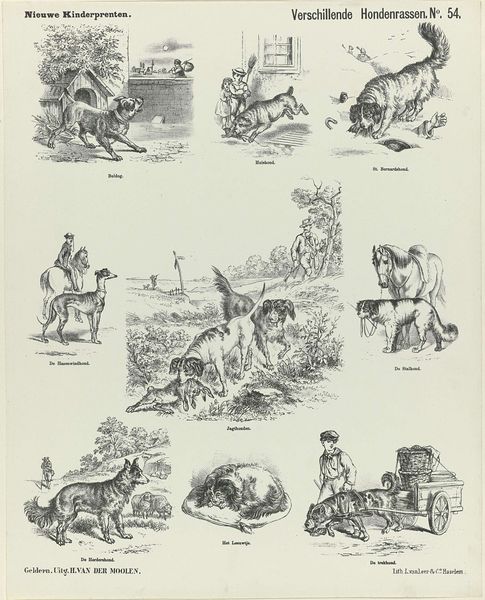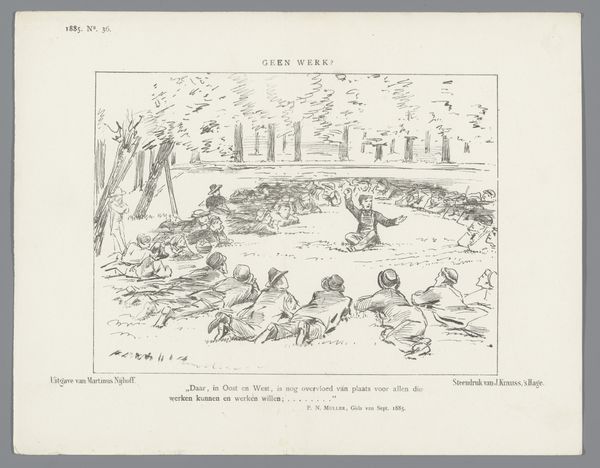
Spotprent op de doortastende maatregelen van de Minister van Koloniën, 1863 1863
0:00
0:00
drawing, print, ink
#
drawing
# print
#
impressionism
#
caricature
#
ink
Dimensions: height 215 mm, width 275 mm
Copyright: Rijks Museum: Open Domain
Curator: Here we have a political cartoon by Johan Michael Schmidt Crans, titled "Spotprent op de doortastende maatregelen van de Minister van Koloniën," dating back to 1863. The medium appears to be ink drawing and print. It depicts a rather chaotic scene… a swamp teeming with frogs and other creatures. Editor: Yes, immediately striking is the dynamism of the composition. The high contrast, the stark lines of the reeds, and the frantic activity of the frogs create a feeling of unrest and agitation. It’s almost a theatrical stage of anxiety rendered in black and white. Curator: Indeed. It's a caricature referencing colonial policy, you see the stork with a "Koloniën," or "Colonies" scroll strapped to it. The frogs represent different reactions to, likely, the firm measures taken by the Minister of Colonies. Editor: Note how the artist employs diagonal lines to drive the viewer’s eye across the scene, from the prone frog in the foreground—appearing utterly defeated—up to the dense gathering of the frog community further back. Semiotically, this downward slant communicates decline, or a falling apart. Curator: Precisely. Some frogs are clearly distressed, one even lying on its back. But look closer. Some frogs are armed, some seem to be giving orders. The cultural memory associated with frogs often places them as representatives of the common person. This print captures a society in upheaval. The poem beneath, from La Fontaine, suggests choosing the familiar even if unpleasant, over the dangers of a new regime. Editor: That stork figure looming large…it's presented in the sharpest focus of the composition. It stands in rigid contrast to the chaotic swamp creatures, suggesting a rigid hierarchical structure imposed on a formerly vibrant but unordered locale. The artist emphasizes the textural contrast: The smooth rendering of the scroll against the chaotic reed and rough skins. Curator: And let’s remember that in 1863, the Netherlands was still grappling with the ramifications of slavery in its colonies. This drawing taps into the anxieties of a populace grappling with reforms and their possible effects. These frogs may represent competing political voices and social anxieties, or perhaps different reactions toward the issue of Dutch colonial management during this tumultuous time. Editor: Seeing this artwork really emphasizes how graphic works use sharp structural contrasts and calculated imbalance to communicate disquiet. The material simplicity of ink emphasizes the powerful emotions through an economy of visual tools. Curator: Exactly. A reminder of how images encapsulate collective hopes and fears, retaining their emotional punch across centuries.
Comments
No comments
Be the first to comment and join the conversation on the ultimate creative platform.

